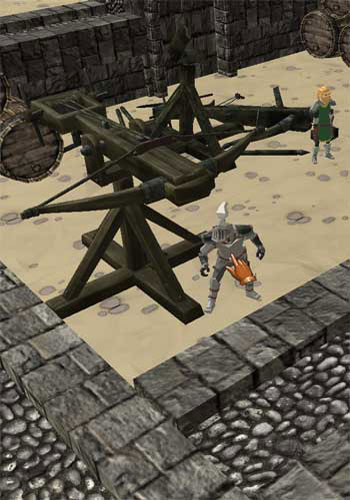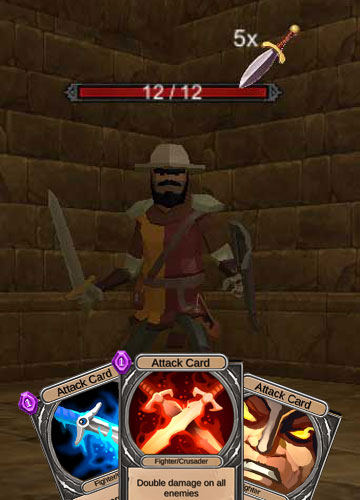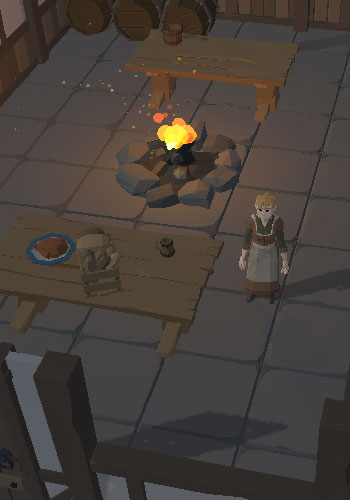 he castles described on this page are not medieval. They were built between one and three thousand years before the medieval period but it's important to understand why and where they were built as many still exist today and were reused in medieval times.
he castles described on this page are not medieval. They were built between one and three thousand years before the medieval period but it's important to understand why and where they were built as many still exist today and were reused in medieval times.
Iron Age hill-forts
During the Iron Age, primitive people planned their defenses carefully to protect themselves from attackers. To avoid being attacked either by fellow humans or wild animals and without the luxury of a stone castle, they chose to live in locations that were difficult for attackers to reach. Here are some strategies that Iron Age people used for defense:
Natural Barriers
Iron Age communities often settled in areas with natural barriers such as hills, cliffs, or dense forests. These features made it challenging for attackers to approach their settlements.
Hill-forts
Hill-forts were common defensive structures during the Iron Age. These were fortified settlements built on hilltops or elevated terrain. The natural elevation provided a strategic advantage, allowing inhabitants to see approaching enemies from a distance.
Ditches and Ramparts
Iron Age communities constructed ditches and earthen ramparts around their settlements. These defensive earthworks acted as barriers, making it difficult for attackers to breach the perimeter.
Palisades
Wooden palisades (fences or walls made of upright logs) were erected around settlements. They served as protective barriers and could be reinforced with additional layers of wood or even stones.
Watchtowers
Watchtowers were positioned along trade routes, near water sources, or at strategic points. They allowed inhabitants to spot potential threats early and raise alarms.
Defensive Layouts
Settlements were often designed with narrow entrances or gateways, making it harder for attackers to storm in. Some hill-forts had multiple concentric rings of walls and gates, creating layers of defense.
Strategic Location
Choosing a location near water sources (such as rivers or springs) was essential for survival. Water provided sustenance and allowed communities to thrive while also acting as a natural barrier.
Cadbury Castle
Cadbury Castle has been occupied on and off since around 5,000 years ago. It consists of four sections of earth works that rise some 500 feet. Archaeological digs at Cadbury have found remains from the Iron Age including pottery, arrow heads and axes. Evidence suggests that Wooden defences were used to protect the top of the castle. Although the wood has now rotted away there are the remains of holes that show where the posts would have been located. During the Roman occupation of Britain the Romans attacked the castle killing its inhabitants or forcing them to flee. The Romans had no use for the castle so they burnt it down and destroyed the ramparts.
The castle appears to have been abandoned until the time of the mythical King Arthur when wood and stone ramparts were constructed.

How good a hill-fort was at defence was based on the height of the banks and depth of the ditches. The remains of many hill-forts survive to the present day including Cadbury Castle and Old Sarum. Where possible the people who planned these fortifications used natural defences such as high cliffs and and rocky coastlines. Having several sides of the fortification protected by unclimbable cliffs meant there was less area for a defender to defend. The only problem with this type of design was that it was difficult to escape if attackers did manage to penetrate the fort.
Roman Rectangular Forts
Porchester Castle
When the Romans arrived they brought their own methods of defence. Their forts tended to consist of large rectangular compounds built from either wood or stone. Wooden forts were built where stone was not available or where there was less need for a strong defence. A ditch around the outside of the fort added an extra level of security. The purpose of the Roman fort was to house a garrison of soldiers. An existing example is Portchester Castle shown on the left. Portchester is rectangular in shape and the walls have semi-circular jutting out walls called bastions. It is built on the shoreline so that it could be resupplied by sea and its location in the natural harbour of Portsmouth was so important to the Normans that they built their own castle within the walls of the Roman structure. The Norman additions to the castle are shown in black
Re-use in Medieval Times
Several Iron Age hill forts were used in medieval times. The most notable of which must be Old Sarum. Old Sarum is located near Salisbury in Wiltshire. This large hill fort was big enough to have a castle, a village and cathedral within its boundaries. The barons pf England did homage to William the Conqueror at Old Sarum after the Norman Conquest. The hill fort was abandoned in around 1220 when it ws decided to move the settlement nearer the river Avon several miles to the South. The new cathedral at Salisbury was the result.
Re-used by later Britons
After the Romans left some of the old abandoned ancient forts were refortified by the Britons to protect themselves from the invading Saxons. A good example of this is Cadbury Castle (or Hill Fort) in Somerset. The site is so big it could hold several entire armies at one time and is supposed to be a site that King Arthur used. The Saxons then reused these ancient strongholds, adding their own defences and many were in use in the medieval era. The diagram above shows the layout of the fort. It consists of a series of steep banks and ditches designed to keep attackers out. The entrance to the fort is via a series of twists and turns designed to confuse the enemy.
The Normans resued Portchester Castle, strengthening the walls and buildings a Norman keep in one corner of the rectangular fort.
Archery Practice at Portchester
Practice your archery skills at Portchester Castle. Once the reconstrution loads either find the practice area or press the 'Y' key.

More castle pages
Pages in this section
Types of castles

Medieval Castles
Types of castles
- Early Fortifications
- Castles of William the Conqueror
- Earthwork castles
- Motte and bailey castles
- Square keeps
- Shell-Keeps
- Polygonal Keeps
- Concentric Castles
Other details






